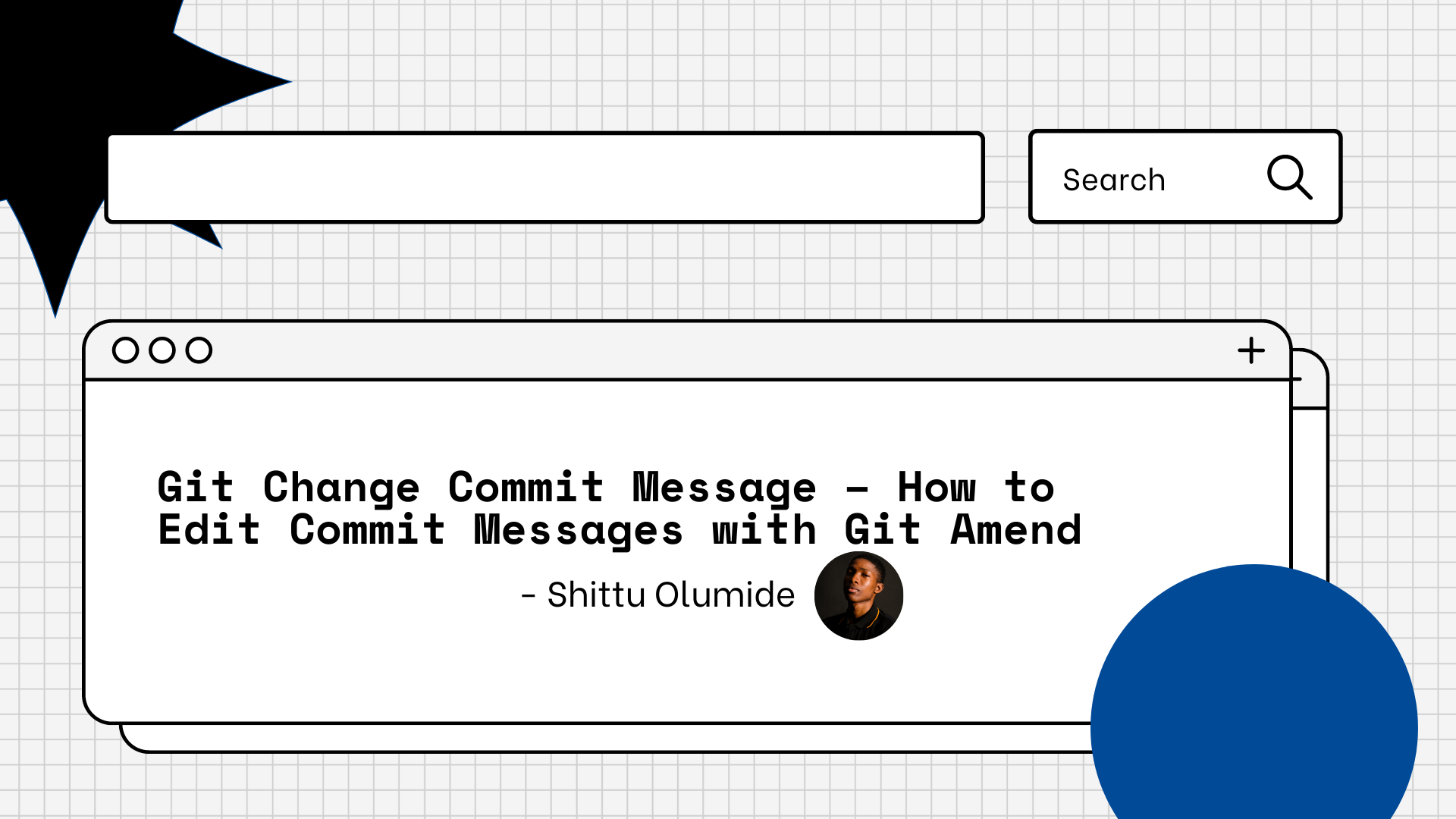Commit messages play a crucial role in Git version control. They provide a historical record of changes made to a repository.
Clear and descriptive commit messages help you collaborate better with team members, more easily maintain your code, and understand how the project works.
But there are times when you may need to edit a commit message due to typos, inaccuracies, or insufficient information. This is where Git amend comes into play.
In this article, we will explore the power of Git amend and its ability to modify commit messages. We will cover everything from identifying the commit to be amended to saving and pushing the changes. I'll, also share best practices, tips, and guidelines to help you make informed decisions about when and how to edit commit messages.
By understanding and utilizing Git amend effectively, you can maintain a clean and accurate commit history.
What is Git amend?
Git amend is a command in Git that allows you to make changes to the most recent commit in your repository without creating additional commits. It is particularly useful for editing commit messages, although you can also use it to add or remove files from the previous commit.
When you use Git amend, it modifies the most recent commit and replaces it with a new commit that includes the changes you made. This allows you to make corrections or improvements to the commit message or the content of the commit itself.
Git amend provides a convenient way to fix small mistakes or omissions in your commits without having to create a new commit altogether. It helps maintain a clean commit history by allowing you to make adjustments without cluttering the repository with unnecessary commits.
How to Edit Git Commit Messages
Step 1: Identify the commit to be amended.
Use the following command to view the commit history and identify the commit message you want to edit:
git log
Look for the specific commit hash or commit message that you want to amend.
Step 2: Edit the commit message.
Once you've identified the commit, use the following command to amend the commit message without changing any other details:
git commit --amend --no-edit
This command will open the default text editor (usually Vim or nano) with the existing commit message. Make the necessary changes to the message.
Then save and exit the text editor.
Step 3: Save the changes.
After editing the commit message, Git will update the commit with the amended message. But it's crucial to review the changes before saving.
You can use the following command to review the changes made to the commit message:
git show HEAD
This will display the changes you made to the commit message. Make sure that the changes are correct and reflect the desired message.
Step 4: Push the amended commit.
Pushing amended commits can be problematic if you have already pushed the original commit to a shared repository. It's generally advised not to amend commits that have been pushed and shared with others, as it can lead to conflicts.
If the commit has not been pushed yet or if you're working in a local repository, you can push the amended commit using the following command:
git push --force origin <branch-name>
Be cautious when using the --force option, as it overwrites the remote branch with your local changes. Make sure to communicate with team members before using this option.
That's it! You have successfully learned how to use Git amend to edit a commit message.
Why Clear and Descriptive Commit Messages Are Important
Clear and descriptive commit messages are essential in version control systems like Git for several reasons:
- Communication: Commit messages serve as a form of communication between developers. When collaborating on a project, clear and descriptive commit messages help team members understand the purpose and intent behind changes made to the codebase.
- Understanding Changes: Commit messages provide context and clarity about the changes made in a particular commit. They help answer questions such as why a change was made, what problem it addresses, and how it affects the codebase.
- Debugging and Issue Tracking: When encountering a bug or an issue, commit messages can provide crucial information for debugging and tracking down the source of the problem. By examining commit messages, developers can identify the specific changes that may have introduced the bug or caused the issue, making it easier to pinpoint and fix the problem.
- Documentation and Historical Reference: Commit messages serve as a form of documentation for the project's history. They provide a chronological record of changes made to the codebase, documenting the evolution of the project over time.
- Code Maintenance and Maintenance Handover: Well-crafted commit messages make code maintenance more manageable. When maintaining a project, developers can refer to commit messages to understand the rationale behind previous changes and make informed decisions about further modifications.
Conclusion
Git amend is a powerful tool that allows developers to edit commit messages and improve the clarity and accuracy of their version control history. By following the step-by-step guide outlined in this article, you can easily modify commit messages in your Git repository.
However, it's important to use Git amend judiciously. While it can be beneficial to correct minor typos or add missing details, excessive use of Git amend can lead to confusion and disrupt the integrity of the commit history.
It's important to strike a balance between maintaining accurate information and preserving the chronological order and context of commits.
For further learning on Git commit messages and version control best practices, you can explore additional resources such as Git documentation, tutorials, and online communities.
Let's connect on Twitter and on LinkedIn. You can also subscribe to my YouTube channel.
Happy Coding!

